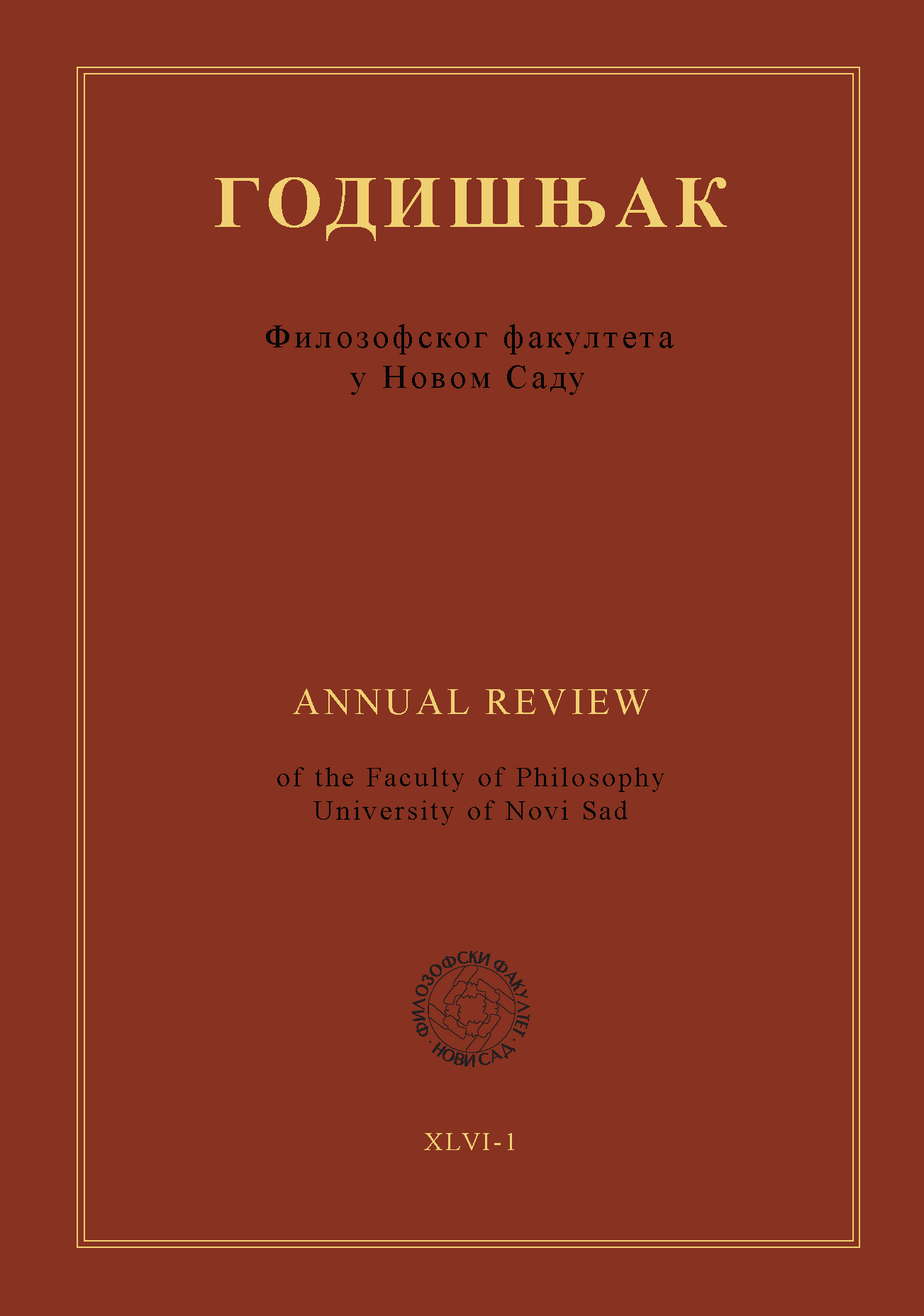THE FUNCTION OF ELLIPSIS, ALLUSION AND IRONY IN THE INTERPRETATION OF LYRIC
Main Article Content
Abstract
Starting from the assumption of the significance of verbal omission in the artistic literature this paper is based on the study of interpretative function of ellipsis, allusion and irony in lyrical poetry. Relying on relevant theoretical sources (C. Brooks, K. Guillen, L. Hutcheon, A. William, P. de Man, S. Newstok, H. Van Tress etc.) the paper considers these concepts both as rhetorical figures and structural procedures. Ellipsis is here theoretically considered as intrinsic deficiency, allusion as extrinsic deficinecy, and irony as intrinsic-extrinsic deficiency of possible verbal content. Special attention is paid to (non)verbal context and it's semantic influence as a widespread discursive tool in modern literature and art. As explicative examples the autor took poems of several promminent modern Serbian poets (M. Nastasijevic, S. Raickovic, A. Ristovic). At the end of the paper, the author exposes the theoretical and metodological cosequences of his study.
Downloads
Metrics
No metrics found.
Article Details

This work is licensed under a Creative Commons Attribution-ShareAlike 4.0 International License.
References
Brooks, C. (1962). „Irony as a Principle of Structure”. Literary Opinion in America. Morton Dauwen Zabel (ed.). New York: Harper & Row. 729–741.
Cirlot, J. E. (2001). A Dictionary of Symbols. London: Routledge.
De Man, P. (1984). The Rhetoric of Romanticism. New York: Columbia University Press.
Ferber, M. (2007). A Dictionary of Literary Symbols. Cambridge: Cambridge University Press.
Giljen, Klaudio (1982). „Stilistika tišine”. Književnost kao sistem: Ogledi o teoriji književne istorije. Nolit: Beograd. 201–250.
Hutcheon, L. (1995). Irony's Edge: The theory and politics of irony. London and New York: Routledge.
Kingsmill, E. (2009). The Song of Songs and the Eros of God: A Study in Biblical Intertextuality. Oxford – New York: Oxford University Press.
Mendel, Oscar (1998): Fundamentals of the Art of Poetry. Sheffield Academic Press: Sheffield.
Настасијевић, M. (1971). Песме, приповетке, драме, Нови Сад – Београд: Матица српска – Српска књижевна задруга.
Newstok, S. (2009). Quoting Death in Early Modern England: The Poetics of Epitaphs Beyond the Tomb. New York: Palgrave Macmillan.
Петковић, Н. (2003). „Чему служи стилистика“. Публицистичка стилистика (хрестоматија). Српско Сарајево: Завод за уџбенике и наставна средства. 5–42.
Раичковић, C. (1972). Песме, Нови Сад: Матица српска.
Ристовић, А. (1995). Мириси и гласови: Изабране песме. Београд: Српска књижевна задруга.
Staiger, Emil (1963): Grundbegriffe der Poetik. Atlantis Verlag: Zürich.
Užarević, Josip (1991): Kompozicija lirske pjesme (O. Mandeljštam i B. Pasternak). Zavod za znanost o književnosti Filozofskog fakulteta u Zagrebu: Zagreb.
Van Tress, H. (2004). Poetic Memory: Allusion in the Poetry of Callimachus and the ‘Metamorphoses’ of Ovid. Leiden – Boston: Brill.
Whitworth, M. (2010). Reading Modernist Poetry. Malden – Oxford: Wiley-Blackwell.
Wolf, Werner (2005): „The Lyric: Problems of Definition and a Proposal for Reconceptualisation”. Eva Müller-Zettelmann and Margarete rubik (ed.): Theory into Poetry: New Approaches to the Lyric. Rodopi: Amsterdam – New York. pp. 21–56.




